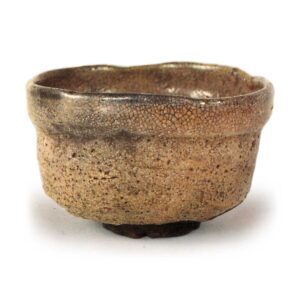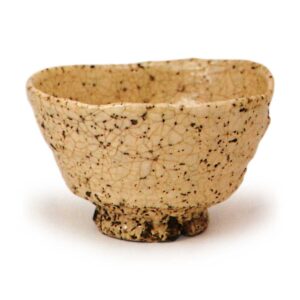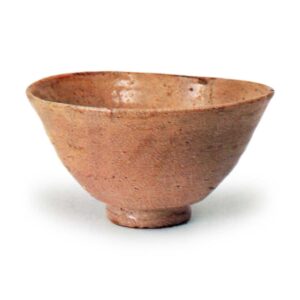


Hagiyaki is pottery produced in Hagi, Nagato Province (Yamaguchi Prefecture). Some say that it began around Eisho (1504-21), but the first recorded instance of Hagiyaki pottery dates back to 1604, shortly after Terumoto Mori entered Hagi, when he brought back a Korean potter, Ri Kei, who became a naturalized citizen and opened a kiln in Matsumoto (Tsubakigashi, Hagi) after finding high-quality clay there. After his death in 1643, his descendants continued the business under the Mori clan, and the present eleven generations have succeeded him. There are other lines of Hagi ware, including Fukagawa ware (Fukagawa, Nagato City) started by Mitsutoshi Yamamura Heishiro, a grandson of Yi Kei’s elder brother Fukamitsu, Miwa kiln started by Miwa Kyusetsu, and Hayashi Hanroku, all of which are included in the Hagi ware category. See each section for details.
Hagi ware has been prized by tea masters since early times, and is said to be the closest to old Korean tea bowls in terms of its clay taste, weight, texture, and glaze. Among Hagi ware, those called Ko-hagi are those made in the Koraizaemon I, Sukuhachi II, and Shinbei III periods. The quality is not very fine, and the glaze is a pale white-yellow color with stone cracks in the glaze. The most popular type of vessels are tea bowls, incense containers, flower vases, and sake cups, and many of them are made with a split height stand. In the modern age, some of Shinbei Yashiro’s works were made of Kyoto clay. In modern times, in addition to the Gohonte, Tamagote, Oni-hagi, Shirohagi, and Mishima-te styles of the past, Tenmoku-te, Nikiyo-te, Sometsuke, and Iga-te styles were added, and the variety of vessels became not only matcha bowls, but also ornaments, sencha bowls, bowls, plates, Nara tea bowls, Tokuri, small bowls and other Japanese tableware, water jars, smoking implements, stationery, flower vases, and other miscellaneous vessels.
There are three schools of Hagi ware: the Saka, Miwa, and Hayashi families, and the Saka family is sometimes referred to as the main kiln and the other two as the side kilns. The names “Kohagi” and “Matsumoto Hagi” are used to distinguish the different periods, and not specifically for the Miwa family’s creations only. Fukagawa ware is sometimes called Fukagawa hagi, but this is the name used in this region, and both Matsumoto hagi and Fukagawa hagi are generally referred to as hagi ware.



